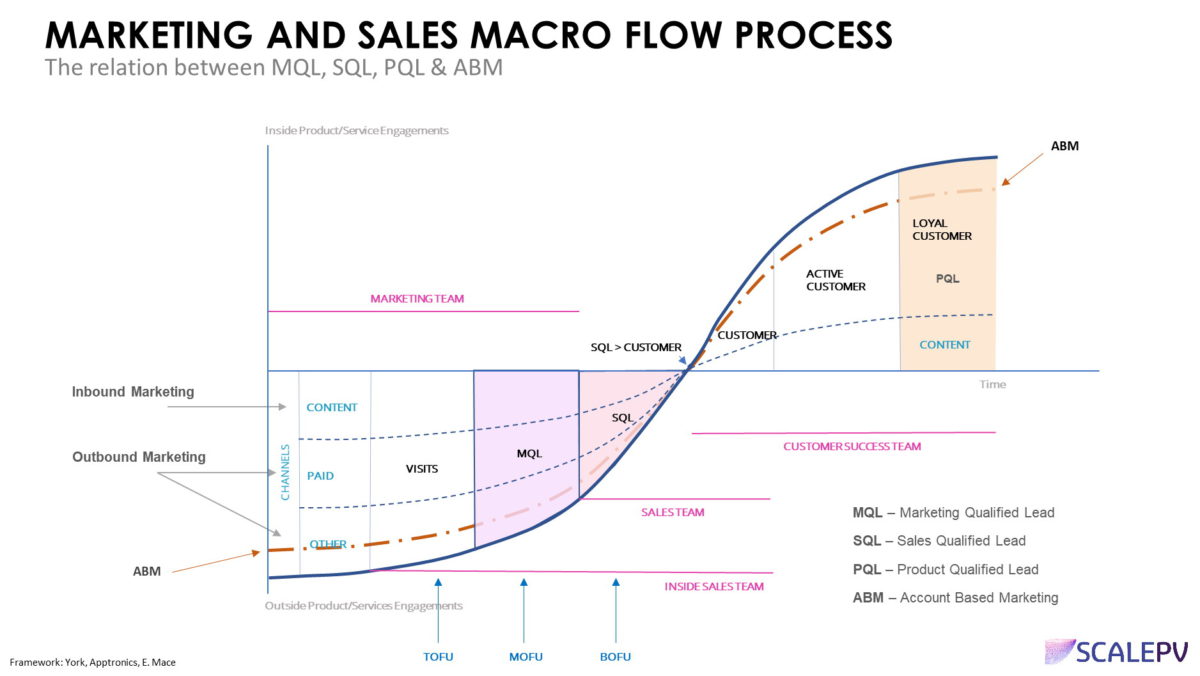Sales technology can optimize your sales funnel, driving revenue growth by enabling more prospects to go through each funnel phase and making your marketing efforts more efficient. Sales and marketing teams proficient in using technology in their work will benefit from doing more business and generating more leads, and the better your sales technology is, the more revenue you will make.
With detailed sales funnel phases and activities, including cards with prospect questions and details of what you need, you can provide your prospective customers with the perfect information and a coordinated message each time, improving the chances the leads will move through the funnel. For example, in enterprise B2B sales: technical sales delivery, live closing, and customized demos allow you to assign potential use cases to the product or solution you sell as you reach out to potential customers.
Technology also allows sales teams and companies to use many metrics to analyze and evaluate leads and prospects throughout the sales cycle and assess these success metrics with their teams. Examples of lead and revenue management include quantifying the value of sales opportunities in the funnel, determining the optimal flow rate (the average time span that leads have at each stage of the funnel), and evaluating the average percentage of transactions done (the so-called win rate). [Sources: 5]
Typically management has access to various tools to examine the sales phases: the top-of-the-funnel (TOFU) belongs to marketing, and the bottom-of-the-funnel (BOFU) belongs to sales. The middle-of-the-funnel (MOFU) pursues common responsibilities and a handover from marketing to sales when a sales agent (sales or business development representative) has a discovery call with the hot lead.

At the core of most B2B sales technology implementations is a client relationship management software or CRM. CRM software automates and streamlines the process of managing the sales funnel, including qualified leads, tracking prospecting activities at each stage of the buyer’s journey, and tracking when the time is right. CRM software helps define the sales process, detect leaks in the pipeline, and streamlines the conversion process once interested parties reach the bottom of the funnel. A good CRM software can analyze and provide insights into what customers think and do at each stage of your sales funnel. These insights can help you invest correctly in marketing activities to attract more prospects, develop relevant messages for that phase, and convert them into paying customers.
The questions that your potential customers are thinking about asking you will occur at different times in the funnel, and your prospects are likely to be at a different point in their purchase journey. Technology can help you understand what they need to do to move on to the next step.
Sales technology can help your teams and activities guide a prospective buyer from when he becomes a leading prospective buyer (lead) by understanding his most important pain points and giving the right answers at the right time. A good sales technology stack can help a sales representative fully answer questions at the bottom of the funnel and connect the lead problem with a solution to convert the lead into a customer.
While it is true that funnel effectiveness from top to bottom can improve funnel results, once a specific sales volume reaches a point of declining returns, too much emphasis is placed on quantity rather than quality. This is when fine-tuning your processes and personalization can help increase returns. These steps will help improve customer loyalty, sales speed, and performance of your sales team and enable your business to become a more modern sales organization.
Sales can be improved through automation like autoresponder series, which brings customers through the crowded, dedicated sales funnel into the phase of closing lead. Implementing an intelligent and efficient qualification process (SQL sales) and effective automation is a central control point in the middle of the funnel, where the greatest variation occurs between companies and sales cycles – definitions and criteria vary.
We have helped many scale-ups and companies reach effective sales technology adoption with their sales teams and align marketing efforts. Reach out to learn more here.
Sources
[1]: https://www.singlegrain.com/blog-posts/content-marketing/how-to-create-marketing-funnel/
[2]: https://www.leadsquared.com/sales-funnel-management/
[3]: https://optinmonster.com/18-ways-increasing-conversions-throughout-your-sales-funnel/
[4]: https://www.crazyegg.com/blog/sales-funnel/
[5]: https://searchcustomerexperience.techtarget.com/definition/sales-funnel
[7]: https://www.business.com/articles/three-ways-crm-technology-can-enhance-your-sales-funnel/
[8]: https://www.semrush.com/blog/make-sales-funnel-convert-better/
[9]: https://www.copper.com/resources/sales-funnel-conversion-rate
[10]: https://www.zendesk.com/blog/sales-funnel-ultimate-guide/
[12]: https://www.pipedrive.com/en/blog/sales-funnel
[14]: https://www.salesforce.com/blog/6-ways-technology-streamlined-sales-3/
[15]: https://www.businessnewsdaily.com/15989-how-to-build-a-sales-funnel.html

